How to build a Japanese pantry with Cibi
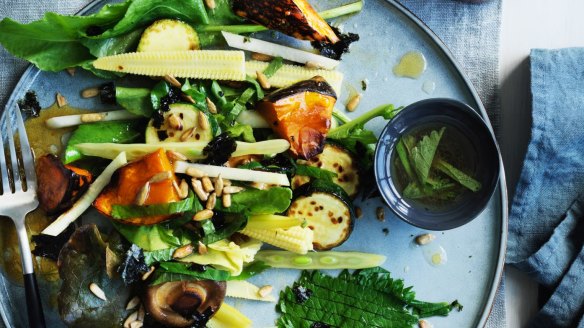
Whether you're cooking classic Japanese cuisine or our homely Cibi-style dishes, these are some of the core ingredients that make Japanese cooking so distinctive.
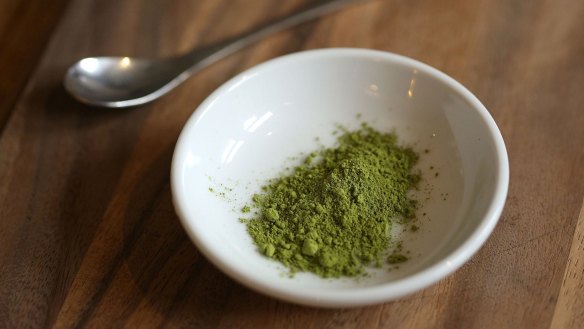
Ao-nori
A flaky, dry green seaweed often served on top of rice with toasted sesame seeds. Great for garnishing rice, tempura, okonomi-yaki (Japanese pancake), tako-yaki (octopus balls) and yaki-soba (Japanese stir-fried noodles).
Azuki beans and paste
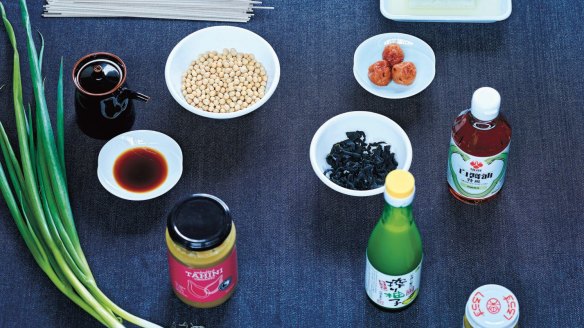
We cook these beans with rice in winter in a dish called o-seki-han, as the beans lend it a beautiful red colour and nice texture. We serve it when we have something special to celebrate in Japan, as the colour red has long been associated with good luck. Of course, it is also very nutritious.
Azuki beans cooked with sugar form a thick, sweet paste that provides the sweet centre of many Japanese desserts. You can often find ready-made sweet azuki bean paste in tins or packets at Japanese or large Asian grocery stores.
Bonito flakes (katsuoboshi)
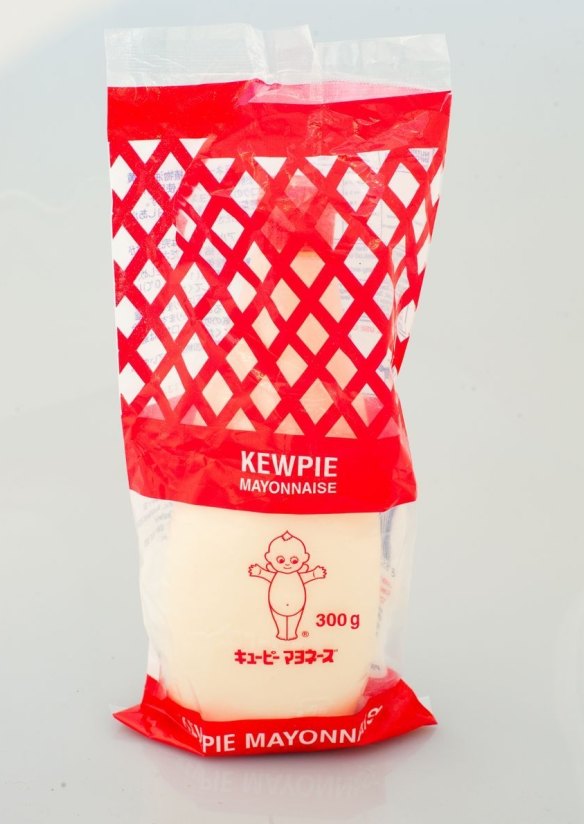
Katsuobushi is dried and fermented bonito. It is available from Asian grocers in the form of shaved, thin flakes. We use bonito flakes to make dashi, soups and our sesame ginger sauce. It has lots of umami. You can also make onigiri (rice balls) with it, use it as furikake (rice seasoning), or serve it with fresh tofu and okonomi-yaki (Japanese pancake).
Daikon (white radish)
If you want to add a touch of Japanese flavour to your dishes, daikon is the perfect vegetable. It is a staple in Japanese cooking – raw in salads; cooked in various dishes and soups; made into pickles; as a sauce, and grated as a garnish. It is traditionally a winter vegetable, but you can buy it all year round. It goes well with all kinds of Japanese sauces, such as miso, soy, vinegar, sesame and yuzu.
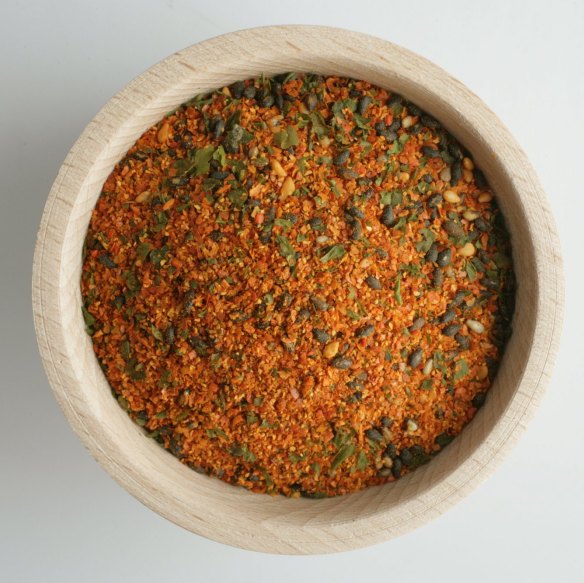
Dashi (stock)
The most important flavour in Japanese cooking – it is said that good cooking depends on the quality of the dashi. A lot of authentic Japanese cuisine is cooked with dashi as the core flavouring with salt, sugar, soy sauce and other ingredients. The three basic dashis in Japanese cooking are kombu dashi; kombu and bonito dashi; and niboshi dashi (made with small dried sardines). At Cibi, the dashi we use for our miso soup is made with kombu and bonito flakes (recipe here).
Ginger
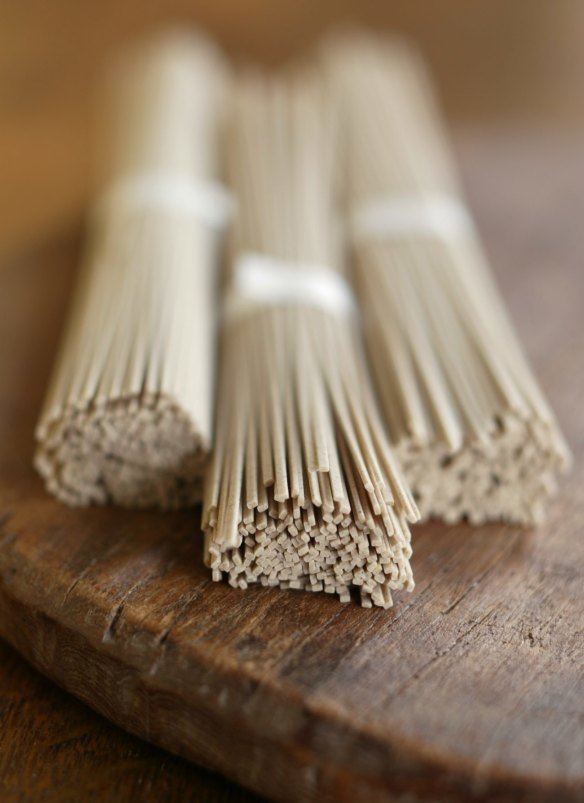
One of the key spices in Japanese cooking, fresh ginger is often grated and mixed with soy sauce for marinating or sliced in thin sticks as a garnish. It is used as a bouquet garni in Japanese and Chinese cooking, while pickled ginger is a well-known side dish with sushi. Ginger is also great for baked sweets and can be turned into syrup for tea. Ginger adds a distinct, fresh flavour and is great for your health.
Green tea (matcha) powder
Matcha is a finely ground tea made from ten-cha. Its cultivation and processing is very similar to gyokuro (high-quality green tea), which is primarily used in Japanese tea ceremonies. Matcha is also a popular flavour for ice-cream and other sweets. Matcha powder is sold in small containers at Japanese or large Asian grocers.
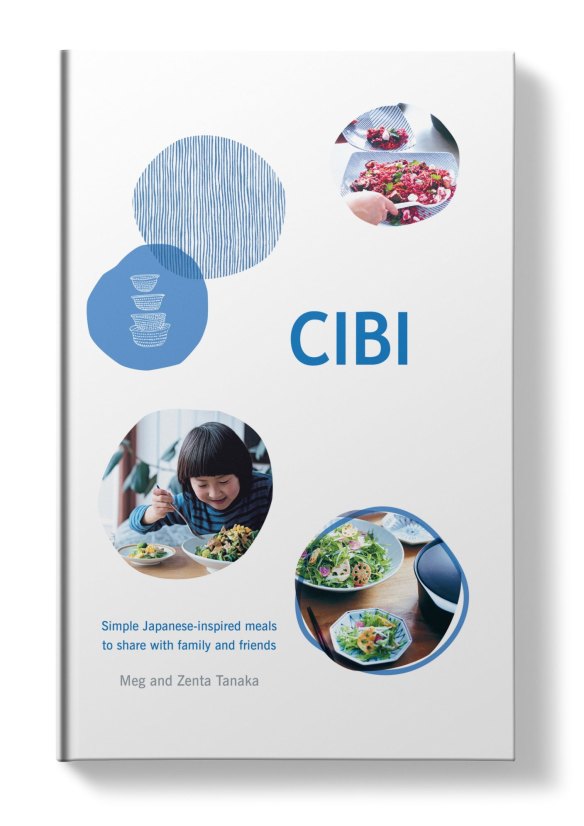
Japanese bean curd
Japanese bean curd is light and thin – similar to the Chinese puffy bean curd, but bigger. We use it in salads or soups or pan-fry it. It is also cooked in soy and mirin with other vegetables and used as the pouch in inari sushi. You can buy it at Japanese grocers, or substitute it with puffy Chinese bean curd from Asian grocers.
Hijiki seaweed, dried
High in minerals, this seaweed variety has fine, dark pieces that look like black long-grain rice. Hijiki is always sold dry, so you need to rehydrate it before cooking. It readily absorbs liquid, so it is usually cooked in soy sauce and sugar to give it more flavour, then tossed with other vegetables.
Japanese mayonnaise
Japanese mayonnaise tastes different than other types of mayonnaise. It is usually made with egg yolk, rice vinegar and vegetable oils such as canola or soybean, so the flavour is light and the texture is thick. We sometimes use mayonnaise as a dressing, mixing it with other spices and herbs. When you make potato salad, this is the perfect mayonnaise to use.
Japanese mustard (karashi)
Japanese mustard is hot and strong and is available as a paste or in powder form. You can use hot English mustard as a substitute.
Japanese seven spice (shichimi-togarashi)
A blend of spices based on togarashi (chilli), it adds pep when sprinkled on top of noodle dishes such as ramen, soba and udon as well as hot pots, soups, yaki-tori and donburi dishes. At Cibi, we make our own shichimi blend using fresh chilli, roasted chilli, dried yuzu peel, sansho pepper, white poppy seeds and toasted black sesame seeds.
Koji
Koji is a fungus culture used for fermentation and has been part of Japanese cuisine for centuries. It is typically used in making sake, miso, vinegar, soy sauce and pickles. We use koji as a dressing, blending it with natto (fermented soybeans), to marinate meat and pickle vegetables. Marinating meat with koji makes it very tender and gives a great umami taste. Rice koji is the most commonly available form. You will find it sold as blocks at Japanese grocers.
Kombu (dried kelp)
A dark green seaweed that's often dried in large leaves. We use kombu for stock or to pickle vegetables. At home, I use kombu for dashi in a hot pot or to make vegetable soup. Once you have it in your pantry, it becomes very handy for cooking a wide variety of Japanese dishes. When boiled, kombu swells as it rehydrates. It can then be chopped up and added to salads and other dishes. It is very nutritious and has lots of minerals.
Mirin
Mirin is a type of rice wine, lower in alcohol and higher in sugar content than sake. My mother-in-law often uses mirin in her cooking. She says that a little touch of mirin makes a dish soft and round, richer and deeper, and I agree with her. Japanese cooking uses quite a lot of sugar, but I try to use mirin instead of sugar where I can.
Miso
A traditional Japanese seasoning made by fermenting rice, barley and/or soybeans with salt and kojikin (yeast). The most common miso is made with soybeans. The result is a thick paste used for sauces and spreads, pickling vegetables or meats and mixing with dashi to make miso soup. High in protein and rich in vitamins and minerals, miso is typically salty. Its flavour and aroma depend on various factors, including the blend of ingredients and the fermentation process used.
Mizuna
We use mizuna leaves quite a lot in the Cibi kitchen. Using mizuna in a salad gives it a very Japanese look; just mix it with other salad ingredients and one of our Japanese-inspired dressings for a simple, beautiful dish. If you can't get mizuna, other salad leaves such as iceberg or cos (romaine) lettuce make a good substitute.
Olive oil
We use olive oil in our cooking, and extra-virgin olive oil for dressings and sauces. Using good quality extra-virgin olive oil is very important to make your sauces and dressings tasty and satisfying – a good oil makes even the simplest avocado dish very special. Our extra-virgin olive oil is from McLaren Vale in South Australia and we love it.
Renkon (lotus root)
Lotus root is a versatile vegetable, and can be used for pickling, frying and braising. At Cibi, we make renkon stuffed with tofu, renkon chips, su-renkon (pickled renkon) and grated renkon cake. Often used in Oshou-gatsu (New Year) dishes, it is said that you can see the future through its holes. You can buy fresh renkon or frozen renkon slices at a Japanese or Asian grocery store. Fresh renkon starts changing colour as soon as it is cut, so always soak it in vinegar and water before cooking to stop it from discolouring.
Rice, brown and white
For white rice, I use a medium-grain variety – usually koshihikari or akitakomachi, which you can find at Japanese grocers. At Cibi, we use medium-grain brown rice. Eating brown rice alone is sometimes a little bit heavy, so I recommend blending it with white rice – it creates a perfect balance of flavour and nutrition. At home, I serve brown rice with olive oil, kombu and a bit of salt, and it tastes amazing.
Rice vinegar
This vinegar pairs well with the umami and sweetness of rice, making it perfect for sushi rice. Grain vinegars are commonly used in Japanese cooking. They are great for pickling, making dressings and marinating. I recommend using rice vinegar in all your Japanese recipes, and, for a subtle, tasty twist, you can substitute wine or sherry vinegar with rice vinegar in other dishes, too.
Sake/cooking sake
Sake is a Japanese rice wine made by fermenting rice with koji and water. We use cooking sake in our kitchen, available at Japanese or Asian grocers. It adds richness and umami, and it also reduces the odours of fish and meat. If you cannot find cooking sake, you can use drinking sake.
Sesame oil
Made from toasted white sesame seeds, sesame oil has a brown-golden colour with dense aromas. It is used for tempura, deep-frying, stir-fries, or drizzled as a finishing touch. It is available from Asian grocers or supermarkets.
Sesame seeds, toasted
We use toasted white and black sesame seeds a lot in our recipes and dressings, and often grind them on top of salads or other dishes. Look for ready-toasted sesame seeds at Japanese or Asian grocers, or make your own by toasting them over a low heat for a few minutes.
Shiitake mushrooms
My parents grow shiitake in the mountains close to home. I use them in soup, and they also add richness and depth when making dashi. If you can't get fresh shiitake mushrooms, you can buy dried shiitake from Asian grocers or large supermarkets.
Shiso leaves
We love shiso, a fragrant, flavoursome Japanese basil. There are two types of shiso leaves: red and green. In summer, there is always heaps of shiso growing in my grandma's vegetable garden, and she uses red shiso leaves to preserve umeboshi (Japanese sour plums). Shiso is wonderful used fresh in salads, tempura, sauces and many dressings.
Soba noodles
Soba is Japanese for "buckwheat" and is one of the best-known Japanese noodles. They have fewer calories than other noodles and pastas and are high in fibre and vitamins. Pure buckwheat is wheat-free, but buckwheat noodles are generally made with both buckwheat and wheat flour. Soba noodles are traditionally served either chilled with a dipping sauce or in hot broth. At Cibi, we make salads with soba noodles.
Soybeans
Along with azuki beans, soybeans are probably the most common hard beans you'll find in Japanese cooking. We often cook soybeans with rice. Adding them to rice turns a simple bowl into a tasty and nutritious dish. You can get soybeans from organic or Asian grocers. Soak them in water a day before you cook them.
Soy sauce
We grew up with soy sauce – there was always a bottle on the dining table. While it isn't in every Japanese dish, you can't talk about Japanese cuisine without it! In the Cibi kitchen, we use soy sauce in many ways: for dressing, marinating, braising, in soup and for pickling.
Spring onion
An iconic Asian garnish. We finely chop our spring onion and sprinkle it over the top of a dish at the very last moment. Spring onion and ginger are our version of a bouquet garni when making Japanese chicken stock or slow-cooked cha-shu pork.
Tahini, unhulled
Unhulled tahini has a darker colour and stronger, richer flavour than hulled tahini, making it a better match for Japanese cooking. I've found unhulled tahini is very close to Japanese white sesame paste. You can usually find it at a health food or organic shop. We use it for making sesame dressing, fish and meat dishes. It's also great in baked goods and with ice-cream or panna cotta.
Tamari
Tamari is a soy sauce made exclusively from soybeans, while most soy sauce is made from soybeans and wheat. Tamari is darker, has more umami and its flavour is richer and stronger. In Australia, tamari is commonly used as a gluten-free soy sauce alternative. In Japan, it is commonly used for dipping sashimi or making teriyaki sauce.
Tofu
These days you can buy many kinds of tofu, often combined with different ingredients and flavours. In our recipes we use plain tofu, which comes in two forms – silken and momen (firm). Silken is light, smooth and very soft, while momen is harder and more dense. We use silken for salads or soups and momen for our tofu patties.
Umeboshi (Japanese sour plums)
This is an iconic Japanese pickle. My grandma would brine ume during the rainy season in Japan, then dry them in the sun at the beginning of the summer before pickling them with red shiso leaves. Umeboshi are very sour and salty, served as a side dish with rice or eaten with onigiri (rice balls) for breakfast and lunch. We also make umeboshi dressing for salad and sashimi.
Wakame seaweed
Wakame is most commonly sold in dried form, although it is also available in salted form. Wakame is high in minerals and has a subtle sweet flavour. We often use wakame in summery salads and wintry soups. Soak dried wakame in water for about five minutes to rehydrate it before using.
This is an edited extract from Cibi, by Meg & Zenta Tanaka, published by Hardie Grant Books, RRP $50.00 and is available in stores nationally.
The best recipes from Australia's leading chefs straight to your inbox.
Sign up